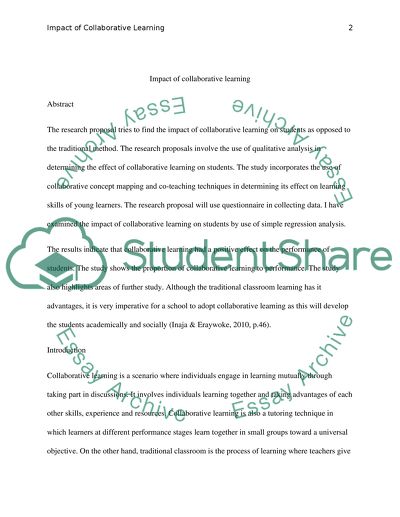Cite this document
(“Impact of collaborative learning Research Paper”, n.d.)
Impact of collaborative learning Research Paper. Retrieved from https://studentshare.org/education/1476143-impact-of-collaborative-learning
Impact of collaborative learning Research Paper. Retrieved from https://studentshare.org/education/1476143-impact-of-collaborative-learning
(Impact of Collaborative Learning Research Paper)
Impact of Collaborative Learning Research Paper. https://studentshare.org/education/1476143-impact-of-collaborative-learning.
Impact of Collaborative Learning Research Paper. https://studentshare.org/education/1476143-impact-of-collaborative-learning.
“Impact of Collaborative Learning Research Paper”, n.d. https://studentshare.org/education/1476143-impact-of-collaborative-learning.


